NAC As a Treatment for Trichotillomania
Trichotillomania is a specific form of an impulse control disorder. It’s a common disease with over 200,000 new cases every year. It is usually self-diagnosed with people recognizing the symptoms and doing their own research. Even for medical professionals, trichotillomania is easy to diagnose. There is no special imaging or lab test required.
N-acetylcysteine (NAC) has been proposed as an effective treatment for trichotillomania. As it is still in its early stages, there is not enough conclusive evidence to definitively and confidently conclude that n-acetylcysteine will cure or treat trichotillomania. However, many find the potential benefits of NAC to outweigh the risks.
What Is Trichotillomania?
Trichotillomania is classified as an obessive-compulsive disorder in the Diagnostic and Statistical Manual (DSM-5) identified with the behavior of people pulling their hair out. People who suffer from the disorder often say that pulling hair helps to relieve stress.
Trichotillomania is not one of the disorders that goes away very easily. Usually, people who suffer from the disease suffer for years. For those who start hair-pulling from a very young age, trichotillomania may affect these people throughout adolescence and adulthood.
Symptoms of Trichotillomania
The most prominent sign of trichotillomania is the noticeable bald spots that result from the person pulling the hair out. Patients usually exhibit an increased amount of stress and tension immediately before the act of pulling out the hair. Outward signs of stress are noticed if a trichotillomania sufferer attempts to resist the temptation of pulling out the hair. As soon as the hair is successfully removed, the patient usually exhibits immediate gratification, pleasure or relief. While pulled hair is most commonly on the scalp, it can also be eyebrows, eyelashes, or body hair.
In order to receive a diagnosis of trichotillomania, the behaviors must not be secondary hair-pulling caused by a separate and distinct recognized disorder. In other words, hair pulling is not secondary to a dermatological condition. The hair removed is otherwise healthy hair being forced out (through the act of pulling) from the hair follicle from the otherwise healthy skin.
Trichotillomania can be a dangerous condition as it can fundamentally impair the affected patient socially and occupationally.
The Onset of Trichotillomania
Trichotillomania may be seen as a progressive disease starting with small behaviors before it becomes problematic. It is most commonly observed as beginning when children are as young as 12 to 13-years-old. It may be triggered by the occurrence of a stressful event such as changing schools, abuse at home, conflicts at home, or the death of a loved one.
Secondary Trichotillomania Problems
It is common to observe teenagers with trichotillomania having difficulty adjusting to life when so many internal, biological changes, are taking place in adolescent development. Trichotillomania can magnify and adversely affect adolescence as these young people are developing self-image, self-esteem, comfort with their own sexuality, and relationships with their peers.
The inability to control the habit of pulling may subject affected teenagers to an onslaught of ridicule and shame.
Many with trichotillomania mature from these secondary problems and go on to hold a job, get married and/or engage in meaningful relationships, and function as a healthy members of society. However, many may have life-long hair pulling behaviors and be afraid to reveal to people that they have trichotillomania.
The Root Cause of Trichotillomania
No definitive research points to an identifiable cause of trichotillomania. There are several theories, though. One theory suggests that there is a chemical or electrical imbalance with the neuroreceptors in the brain in certain regions, such as those found in obsessive-compulsive or impulse control disorders. There may also be a genetic predisposition; if other family members have trouble with impulsive or self-soothing behaviors, it may make hair pulling more likely. The most measurable factor is it that trichotillomania is caused by a combination of external aggravating conditions or circumstances.
Other Behaviors Associated with Trichotillomania
Because trichotillomania is identified as a form of obsessive-compulsive disorder, similar somatic or body-focused behaviors to relieve stress (conscious or not) are associated with trichotillomania. These practices include skin picking, nail biting, head banging, thumb sucking, and even habitual scratching.
As adolescence is a crucial time in human development, the onset of trichotillomania is heavily associated with adolescent depression and anxiety due to the chronic demoralization that hair pulling can bring.
N-acetylcysteine: A Treatment for Trichotillomania
N-acetylcysteine (NAC) is currently being examined as a possible treatment for trichotillomania. Traditionally, n-acetylcysteine has been used to treat a wide variety of medical ailments; medical students learn about NAC as the antidote to acetaminophen (Tylenol) overdose.
N-Acetylcysteine Is a Naturally Occurring Amino Acid
N-acetylcysteine is a subform of the amino acid cysteine and is a naturally occurring substance produced by the human body. N-acetylcysteine promotes the body’s production of glutathione, which a critical antioxidant. As a result, n-acetylcysteine plays a significant role in countering cellular inflammation.
Historically, n-acetylcysteine has been used to break down mucus common in sufferers of respiratory ailments. It is also used as an effective treatment for the overdose of acetaminophen.
The Significant Study
One study took place in 2009 that garnished immediate attention from the scientific and medical communities. Dr. Jon E Grant from the University of Minnesota took 50 individuals in a double-blind, placebo-controlled study to examine the effectiveness of n-acetylcysteine as a treatment method for trichotillomania. The treatment proved to be effective for 56 percent of the study participants taking n-acetylcysteine.
Side Effects of N-Acetylcysteine
At the recommended dosage, n-acetylcysteine has not been shown to regularly cause significant harmful side effects. However, when n-acetylcysteine is taken orally in higher dosages, gastrointestinal problems such as vomiting have been reported. In rare cases, n-acetylcysteine has been associated with rashes.
Is N-Acetylcysteine Safe for Children?
As n-acetylcysteine is naturally occurring in the body, it is assumed that it is safe for children in limited doses. It is a common over-the-counter supplement with off-label uses in pediatric populations.
There has been at least one prominent study to measure the effectiveness of n-acetylcysteine for the treatment of trichotillomania in pediatric subjects. The setup for the study was designed from the previous study conducted by Dr. Grant in 2009. The assumption was that n-acetylcysteine would be useful in treating trichotillomania in children merely because Dr. Grant study provided evidence that it was effective in adults. However, the study stood in contrast to Dr. Grant’s study and failed to show any substantial, statistically significant difference as a treatment for trichotillomania in children. The study reported it that n-acetylcysteine has no benefit and is not an adequate remedy in pediatric patients.
N-Acetylcysteine Availability
N-acetylcysteine has a history that goes back 30 years. N-acetylcysteine is considered to be a supplemental antioxidant and is readily obtainable and marketed as such. It is sold by many stores and under many brand names. It is available without a prescription. As with all supplement recommendations, one should research the manufacturer and check for accuracy in ingredients and third-party testing.
Dosage Information
Skepticism surrounds the use of n-acetylcysteine as an effective treatment for trichotillomania. Consequently, additional studies are necessary to reach a medically accepted determination; NAC is not FDA-approved for treatment of trichotillomania.
N-acetylcysteine is used off-label to treat a number of other ailments.
To avoid going over the recommended dosage, a recommended dosage must be defined. The highest prescribed dosage is taking 750 mg of n-acetylcysteine three times per day for a total of 2250 mg. Some researched or recommended doses include the following:
- Alcoholism – 600-1,000 mg twice a day
- Asthma – 500 mg 3 times a day
- Bronchitis – Acute: 600-750 mg 3 times a day until recovered; Chronic: 600 mg twice a day
- Cancer – 600 mg 3 times a day
- Cancer Prevention – 600-1,000 mg once a day
- Cataracts – 500 mg 3 times a day
- Flu – 500 mg 3 times a day
- Heart Disease Prevention – 500 mg 3 times a day
- Macular Degeneration – 500 mg 3 times a day
- Multiple Sclerosis – 600 mg 3 times a day
- Psoriasis – 600 mg twice a day
- Sinusitis – 600 mg 3 times a day between meals
All dosing should be discussed with a medical professional, especially as most if not all of the above indications are not FDA-approved.
Precautionary Notes about N-Acetylcysteine
There is no medical consensus about the amount of glutathione that can safelly be utilized by the body.
Despite its reputation as antioxidant, high doses of n-acetylcysteine (over 2800 mg) have been shown it to act as a pro-oxidant instead of an antioxidant. Evidence indicates that higher levels actually reduce the amount ofglutathione levels. High doses of n-acetylcysteine are cautioned against in otherwise healthy individuals.
As with many supplements, n-acetylcysteine has not been tested in pregnant women. Until further evidence suggests otherwise, the use of n-acetylcysteine in pregnant women is cautioned against.
N-acetylcysteine is recommended to be taken on an empty stomach. If taken in conjunction with other amino acid supplements, it is recommended that n-acetylcysteine be taken separately at a different time of the day on an empty stomach. People who take n-acetylcysteine on a regular basis have been found to be deficient in copper and zinc. Further investigation revealed the depletion of these two minerals through urinary excretion. It is recommended that this loss is countered with additional copper and zinc supplements in addition to the n-acetylcysteine treatment regimen, with consideration to discuss labs with one’s medical professional to measure serum levels of these minerals






